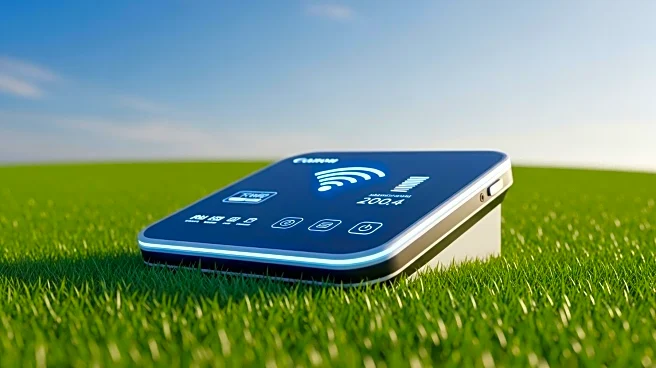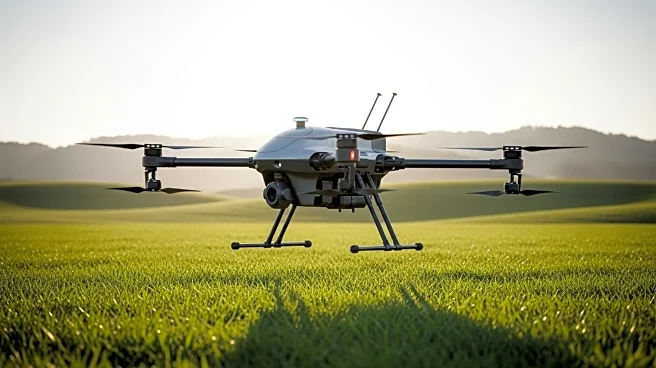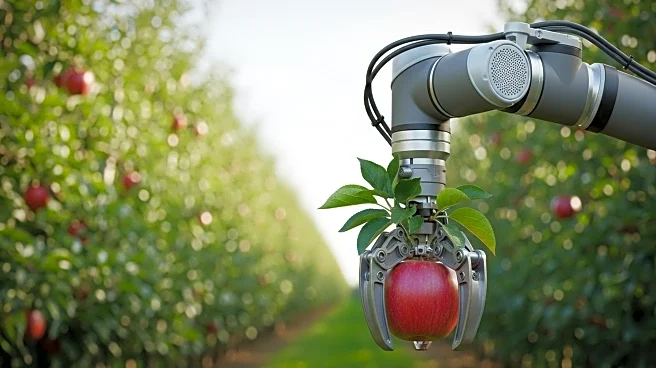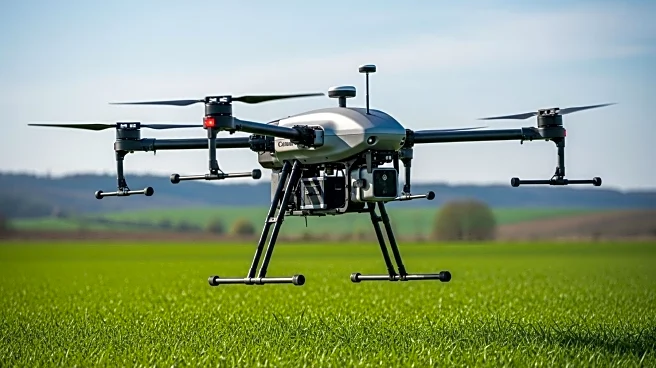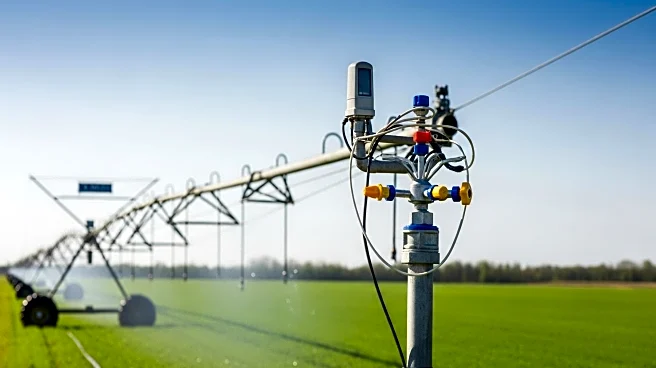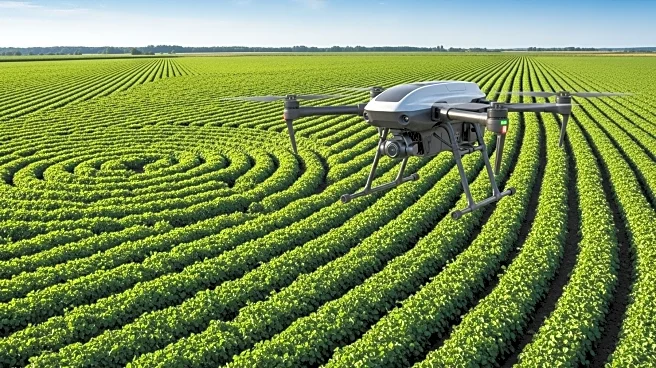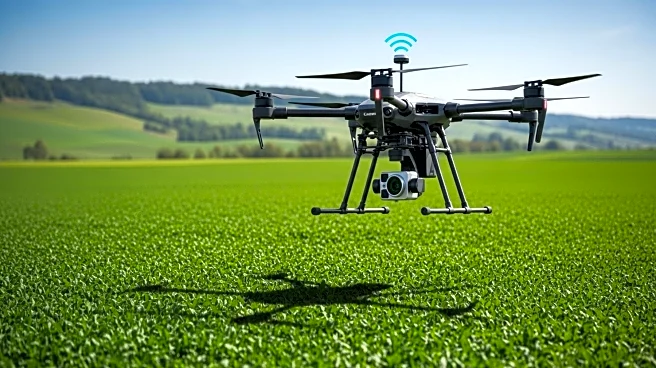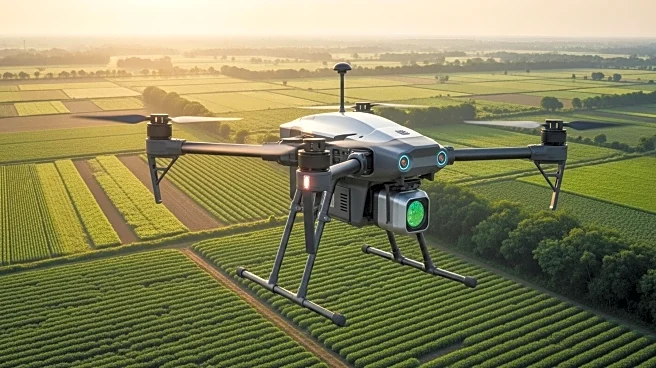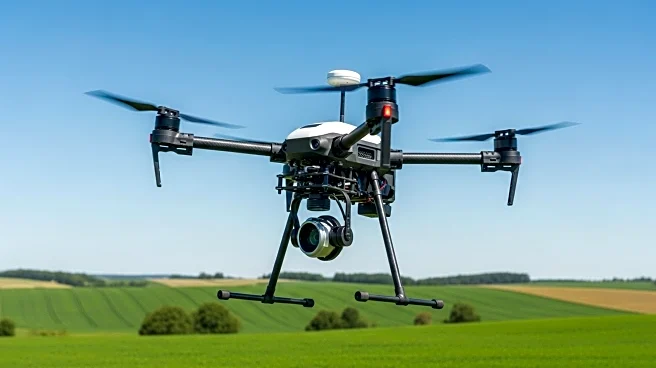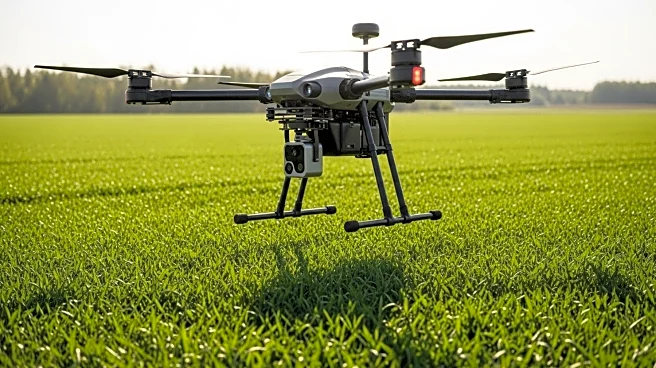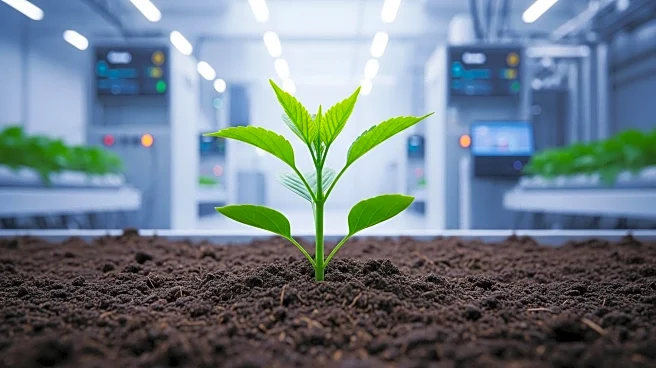What's Happening?
The agriculture IoT market is anticipated to grow significantly, reaching a value of $12.61 billion by 2030, according to a report by MarketsandMarkets. This growth is driven by the increasing demand for smart, energy-efficient, and sustainable IoT-based solutions in precision farming, livestock monitoring, and greenhouse automation. IoT devices are being widely adopted for soil health monitoring, climate control, and automated irrigation, which help in optimizing resources and increasing crop yields. The global push towards sustainable agriculture and stricter environmental regulations are encouraging the adoption of IoT technologies, which support eco-friendly farming operations.
Why It's Important?
The expansion of the agriculture IoT market is crucial for addressing environmental and productivity concerns in farming. By reducing water wastage, optimizing fertilizer usage, and minimizing manual labor, IoT technologies offer real-time data analytics and remote-control capabilities that enhance farming efficiency. This growth is expected to benefit farmers and agribusinesses by providing tools for safer and cleaner farming practices. Additionally, the adoption of IoT in agriculture aligns with global sustainability goals, potentially leading to more resilient food systems and improved food security.
What's Next?
The precision aquaculture segment is expected to witness the highest growth within the agriculture IoT market. As fish farms and hatcheries seek advanced tools to optimize productivity and maintain water quality, the adoption of IoT solutions is likely to increase. Furthermore, the Asia Pacific region is projected to grow at the highest rate, driven by increasing food demand and shrinking arable land. Governments in the region are investing in IoT-enabled solutions and rolling out subsidies to accelerate smart farming practices.
